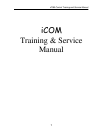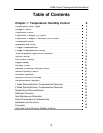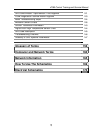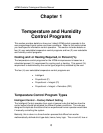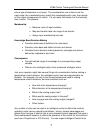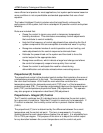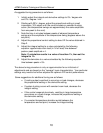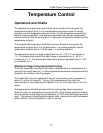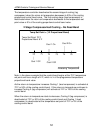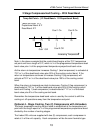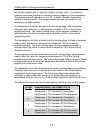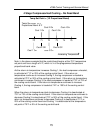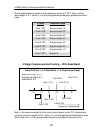
iCOM
Control Training and Service Manual
The integral (I) term is determined by two things: the difference between the return
air temperature and control set point and the amount of time this difference has
existed. This term is expressed in % cooling (heating) desired for each minute
and degree above (below) the set point. It is adjustable from 0% - 100% per
degree/minute. The purpose of this term is to force the control to maintain the
temperature around the set point by slowly but continuously adding (subtracting) a
small amount of cooling (heating) to the total control output until the temperature is
at the set point.
Proportional + Integral + Derivative (PID) Control
The PID control combines three (3) individual terms to determine the control
output for a given set of conditions. Note that PID control is used only for
temperature. If PID control is selected, the humidity control will be in percent
relative humidity (%RH).
The proportional (P) term is determined by the difference between the current
temperature and the control set point. This term is expressed in % cooling
(heating desired for each degree above (below) the set point. It is adjustable from
0% to 100% per degree. The purpose of this term is to adjust the control output
for any deviation between the current temperature and the control set point.
The integral (I) term is determined by two things: the difference between the return
air temperature and control set point and the amount of time this difference has
existed. This term is expressed in % cooling (heating) desired for each minute
and degree above (below) the set point. It is adjustable from 0% - 100% per
degree/minute. The purpose of this term is to force the control to maintain the
temperature around the set point by slowly but continuously adding (subtracting) a
small amount of cooling (heating) to the total control output until the temperature is
at the set point.
The derivative (D) term is determined by the rate of change of temperature. This
term is expressed in % cooling (heating) desired for each degree per minute rise
(fall) in temperature. It is adjustable from 0% to 100% per degree/minute. The
purpose of this term is to adjust the control output for quickly changing
temperatures, thus providing an anticipation control.
All three terms are adjusted by selecting the “Setpoints” icon in either the USER or
SERVICE Menu screen. If PID control is selected, the temperature proportional
band value (and optional temperature dead band value) is not used by the control.
For optimum performance, a PID control must be adjusted or tuned according to
the characteristics of the particular space and load to be controlled. Improper
tuning can cause the control to exhibit poor response and/ or hunting. The
characteristics of the space and load may change seasonally, so occasional
returning is required for optimum performance.
9



